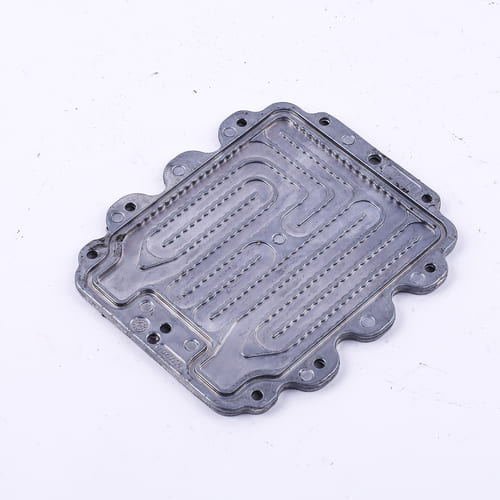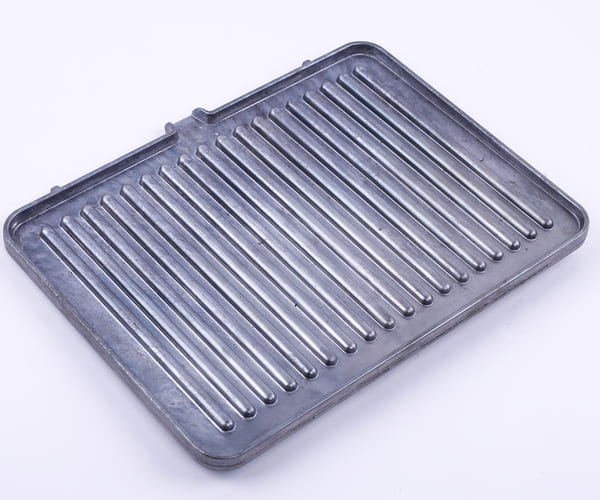Introduction
Various industries use die-cast parts. These industries include the electrical, telecommunications, electronics, and aeronautical industries, among others.
In the same vein, die-cast parts are used to manufacture different products. So, there are myriads of die-casting products. However, in this article, we will be considering common die-casting products.
Follow closely.
What is Die-casting?
Die-casting is an automated process of pressing aluminium alloy into a mold under high pressure and at high speed.
It’s a method of heating molten alloys to a high temperature till they are molten. Here, liquid aluminium is injected under high pressure into a mold.
The mold comprises two halves separated to reveal the cast aluminium parts after the molten aluminium has solidified. One of the two halves is static, while the other is mobile.

After injection of the molten metal into the mold, it solidifies. This results in cast parts with a precisely formed and smooth surface.
A single mold can be used multiple times, making die casting preferable for a bulk cast part. Also,
There are two different types of die-casting machines you can use. These are the hot chamber and cold chamber machines.

The casting process is seamless as it requires minimal assembly. You can also integrate all the assembly features, such as bosses, holes, students, etc., into the mold design at a go.
Die casting is preferable for speedy production of bulk metallic parts requiring minimal post-production machining. It produces high-quality and reliable die-casting parts.
What are the common die-casting products?
• The automobile engineering bracket parts, seat parts, wiper parts, engine room parts, lighting parts, transmission housings, steering gear housings, clutch housings, carburettor housings, valve covers, gear shifters etc.
• The automotive heat sinks, gearboxes, intake tubes, engine cylinder heads, car rims, airbag housings, sensor housings, brake systems, power steerings, etc.

• The electrical cooling fan, cylindrical heads, compressor spirals, electronic device casings, smartwatch components, camera chassis, couplings, headphones, etc.
• The electrical optical drive brackets for DVD player, colour wheel stem for TV, head for electronic automobile key, etc.

• The furniture door locks, knobs, brackets, hinges, arm resets, etc.
• Gearboxes for the hospital. (This helps in adjusting the patients’ beds. Also, surgical tables are usually equipped with a gear motor.)
• Ultrasound system. (This is a 3D-printed cast. This uses an ultrasonic pulse generator to stimulate the growth of new bone in broken bones. It reduces the healing time by 38%.)
• Surgical lamp base, dialysis equipment, forceps, retractors, scissors, drills, clamps, infusion pumps, infusion stands, blood pressure monitors, etc.

(A dialysis machine is a machine that filters a patient’s body to remove excess water and water products when the kidneys are damaged or dysfunctional.
Forceps are a strong metal instruments that look like large spoons or tongs. They are curved to fit around a newly born baby’s head to guide the baby out of the birth canal.
The retractor is a surgical instrument to separate and manipulate the edges of a surgical incision or wound. It is also used to hold back underlying organs and tissues so the underneath body parts can be accessed )

• Aeronautical parts such as engine housings, window frames, valves, engine rings, engine blades, etc.
• Firearms such as triggers, trigger guards, safeties, etc.
• Home appliances such as wheel pulleys, vacuum cleaner bodies, washing machine rotors, and roller latches. (A wheel pulley is an object made of strong metals. Cast iron is usually used to manufacture it. It is used to guide chains or belts. You can also use it to lift objects.)
• The electrical LED heat sink systems, LED street lights, RF filler repeaters, tower housings, electrical meters, LED modules, etc.

•The telecommunication base plates, heat sinks, fibre optical transceivers, RF filler boxes in base stations, connector housings, and shielding boxes for microwaves.
(Heat sinks are devices or substances for absorbing excess or unwanted heat. Fibre optical transceivers are single hardware components that transmit and receive data through fibre optic technology.
• Cookwares such as lids, oven interiors and exteriors, blenders, cooking pots, gas stoves, electric cookers, etc

• Other common die-cast products include cell phone frames, end beads for guitar strings, flame jet & flick wheel for lighters, football cleats, handles for razors, housings for earbuds, seat belt latch, video game covers, etc.
Note that in the manufacturing of these die-cast products, aluminium is one of the most used common metals. Among other impressive features, it is lightweight, durable and corrosion-resistant. It also has low density, good heat and electrical conductivity.
Also, zinc, magnesium, and lead are commonly used metals too.
The advantages of die-casting products
• Die-cast products are durable and have dimensional stability.
• They can be shaped to have complex shapes within closer tolerances.
• They can combine many functions into one complex-shaped part.
• The products are manufactured using a high production rate with little or no machining. Their mass production enables thousands of identical castings within specified tolerances.

• They can be produced with thinner walls than those obtainable by other casting methods.
• They are much stronger than alternative plastic injection moulding.
• They have smoother surfaces than most forms of casting, such as sand or permanent mould.
• Because they are usually made with corrosion-resistant alloys (such as zinc, aluminium, etc.), they are always corrosion-resistant.
Die-cast products: Mass production and cost-effectiveness
Die-cast products are made with die-cast parts. The die-casting process is the method of manufacturing these die-cast parts. This process seems to be cost-intensive; at least, the initial tooling costs are high.
The die-casting process entails various costs such as material costs, production costs, tooling costs, etc.
For example, materials such as aluminium cost USD 3000 per ton. Also, the electric furnace used in the melting process costs an average of USD 2599.

The production costs entail the labour cost and the machine costs. An average cold-chamber die-casting machine costs USD 20000-USD 10000, depending on the size and quality.
Also, for commercial use, high-end machines such as CNC machines cost an average of USD 11,000 to USD 19,000. For industrial use, this may be as high as USD100000-USD150000.

Thus, in die-casting, there is a high initial tooling cost. However, this high tooling costs can be offset by the reduced per unit cost in large-scale cast-parts manufacturing. This is because of the repeatability of mold in casting.
So, the die-cast process may be expensive for small-scale die-castings and may drive up the cost of small-scale die-cast products.
Conversely, this is not the case for large-scale die-cast products where a large number of cast parts are required. This explains why common die-casting products are not usually manufactured in small quantities.
Conclusion
In this article, we have considered various common die-cast products across various industries. We also considered how the mass production of die-cast products can help in reducing production costs.








